Don’t know what blooms are toxic? Here are Common Flowers that are Poisonous you need to be cautious around.
Do you know about the most Common Flowers that are Poisonous? If you have children and pets, you should avoid growing the most poisonous flowers. Let us take you through the names of poisonous flowers so you can stay safe.
Common Flowers that are Poisonous
1. Hydrangeas

Botanical Name: Hydrangea
Be extra careful when growing Hydrangeas, and don’t keep them indoors as hydrangeas contain a small amount of cyanide and can be lethal if ingested in very large quantities.
2. Clematis

Botanical Name: Clematis
Rather mild but toxic, Clematis is among the most poisonous flowers for humans and animals. When touched or consumed, the toxin called anemonin (irritant glycoside) is released.
It can cause dermatitis in some people after contact and mild burning sensation and ulcer in the mouth if eaten. It affects pets like dogs and horses more and is among the poisonous flowers to cats, too.
3. Calotropis

Botanical Name: Calotropis
Calotropis is one of the most common weeds that grow all across South Asia. Its latex oozes out from the flowers and leaves that contain calotropin, which can cause blindness if it comes in contact with the eyes.
4. Oleander

Botanical Name: Nerium oleander
Oleanders are charming and fragrant, but be a little careful with them, as eating only a meager amount of this toxic flower can be dangerous.
All parts of Oleander are extremely poisonous if ingested. Even the smoke burned from its wood is toxic.
5. Azalea
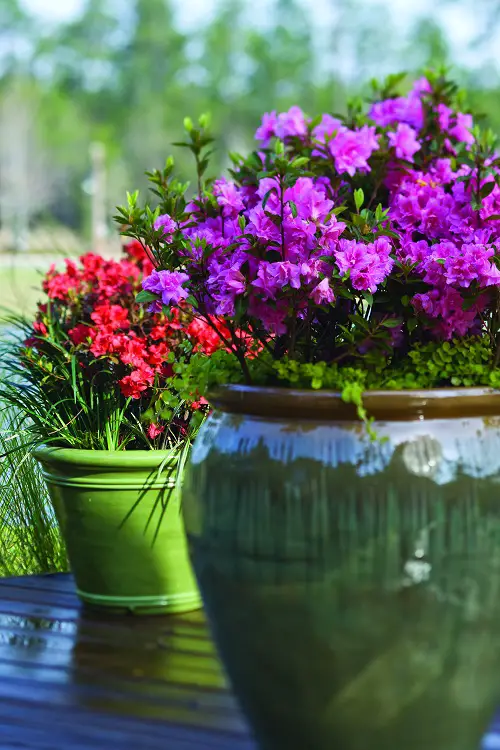
Botanical Name: Rhododendron
Both Azaleas and Rhododendrons are poisonous to pets. The leaf or stem can lead to nausea, abdominal pain, and difficulty breathing if eaten.
6. Daffodil

Botanical Name: Narcissus
The bulbs are the toxic part of this popular and familiar flower, so you should probably take extra care when you plant it if you have a dog that likes to dig in the flower beds.
Too much ingestion can cause vomiting, diarrhea, squeeze cases, tremors, and heart rhythm disorders.
7. Lantana
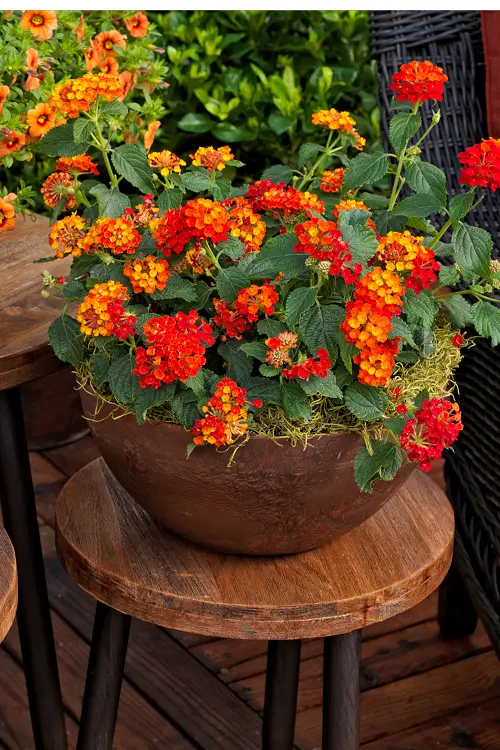
Botanical Name: Lantana Camara
Lantana are common poisonous flowers in the tropics and are treated as weeds in many countries. This flower is known for its intense fragrance, and it also attracts butterflies.
However, all parts of the plant contain liver toxins. Symptoms like depression, vomiting, fatigue, and liver failure are possible after ingestion.
8. Foxglove

Botanical Name: Digitalis purpurea
Foxgloves are used to prepare medicines. Still, all parts of the plant are mildly poisonous, contain digitalis glycoside, digitoxin, and deslanocide, and are used in heart medicine.
However, if you ingest a particular amount of Foxgloves, it can cause headaches, stomach pain, and fainting.
9. Lily of the Valley
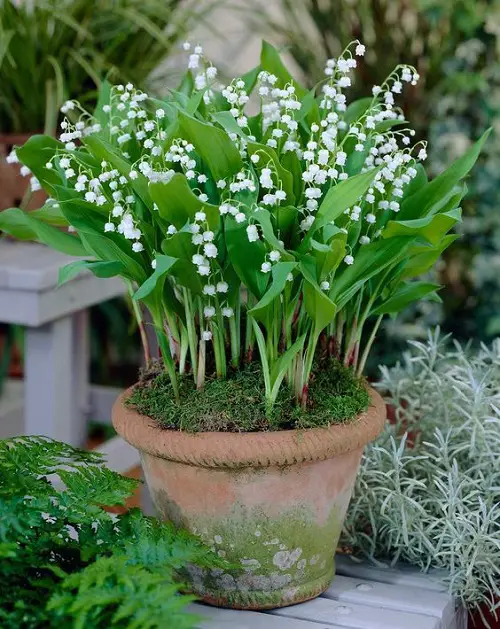
Botanical Name: Convallaria majalis
The Lily of the Valley is very toxic; flowers, leaves, and stems should not be eaten. The plant contains cardiac glycosides, which act directly on the heart and causes vomiting, illusion, blurriness, slow heart rates, and can be fatal in some cases.
Fortunately, the poison is slowly absorbed into the body so that medical intervention on time after consumption can prevent much harm.
10. Morning Glory
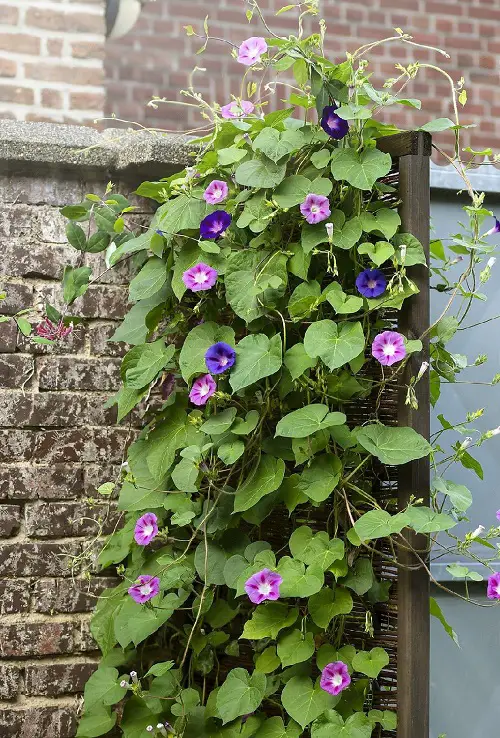
Botanical Name: Ipomoea
Not all species of Morning Glory are poisonous, but there are a few whose seeds are poisonous if swallowed.
Morning Glory contains the toxic called lysergic alkaloids, which cause medical signs like diarrhea, in-coordination, and liver failure if a large amount of seeds is ingested.
11. Wisteria

Botanical Name: Wisteria
The tempting beauty of Wisteria is alluring; it is among poisonous flowers for dogs and cats. Every part of it is poisonous, especially seeds.
Ingesting even a few seeds can cause mild abdominal pain, vomiting, diarrhea, and depression of the central nervous system.
12. Periwinkle
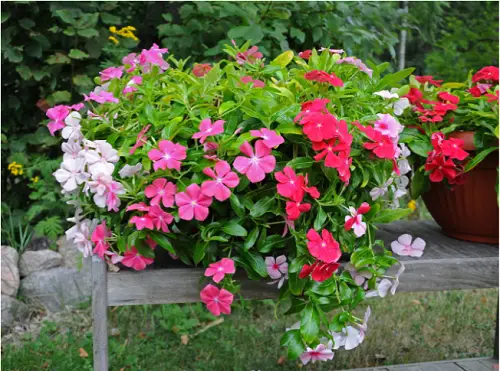
Botanical Name: Catharanthus roseus
Madagascar Periwinkle is one of the easiest-to-grow flowers and can be excellent ground cover in warm climates. Still, it is mildly poisonous and contains a group of alkaloids.
It is used in Ayurveda and Chinese herbal medicines to cure high blood pressure. Its excess consumption causes a drop in blood pressure and hypotension. Do not confuse Madagascar Periwinkle with Vinca major (Greater Periwinkle), which is not poisonous.
13. Calla Lily

Botanical Name: Zantedeschia
Calla Lily can be an excellent cut flower and looks beautiful, but these are also poisonous red flowers. Its leaves are edible after cooking. All parts of the calla lily are poisonous and contain calcium oxalate crystals.
Eating any part of the plant raw can cause swelling of the lips, tongue, and throat. Similar symptoms occur to the animals if they eat it.
14. Iris

Botanical Name: Iris tectorum
Caution should be exercised as all parts of the Iris plant, particularly the roots, contain toxins that are poisonous.
Symptoms of ingestion may include a burning sensation in the mouth and throat, abdominal pain, nausea, and diarrhea. Skin contact with the seeds, leaves (sap), or roots may result in dermatitis.
15. Marsh Marigold
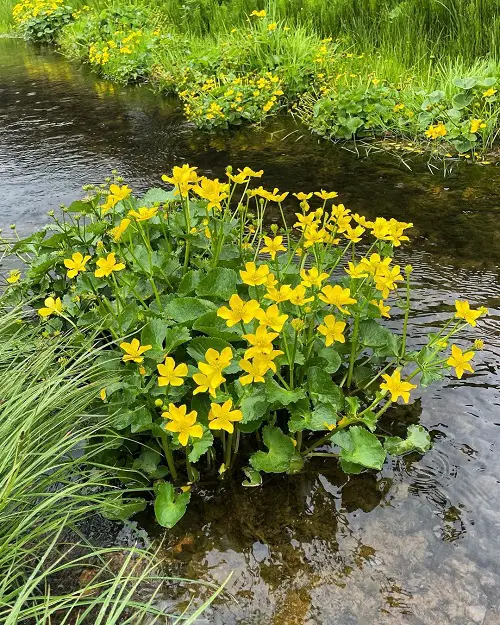
Botanical Name: Caltha palustris
The leaves of Marsh Marigolds contain protoanemonin, an oily toxin present in all plants of the Ranunculaceae family. This toxin renders the leaves poisonous to both livestock and humans.
When Marsh Marigold plants are damaged, they release protoanemonin, which can lead to skin irritation upon contact.
16. Tulip
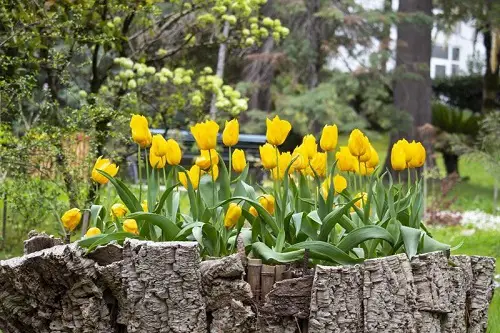
Botanical Name: Tulipa
Tulips possess toxic properties throughout various parts of the plant, including the leaves, stems, roots, and berries. Among these, the bulbs contain the highest concentration of toxic chemicals.
Ingesting tulip bulbs or other parts of the plant can lead to poisoning and result in several symptoms. It is important to be cautious and avoid consuming any parts of the Tulip plant.
17. Jimson Weed
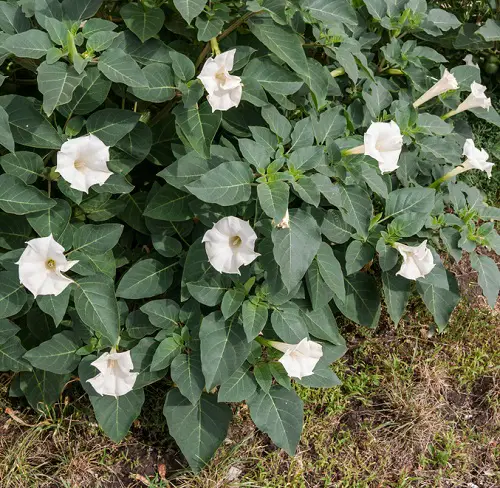
Botanical Name: Datura stramonium
Jimson weed has green leaves that can sometimes have a bit of purple color. It is very dangerous if you eat it or breathe it in.
Despite its historical use in treating asthma and other health problems, it can make you feel sick, induce vomiting, and cause hallucinations.
18. Mountain Laurel

Botanical Name: Kalmia latifolia
Did you know that if you eat Mountain Laurels, you may experience a burning sensation in your lips, mouth, and throat? So be aware of this plant.
19. Giant Hogweed
Botanical Name: Heracleum mantegazzianum
Giant Hogweed is not among poisonous flowers to touch. Instead, it’s the sticky liquid called sap.
Giant Hogweed sap contains harmful chemicals that can make your skin very sensitive to sunlight. It can cause sunburn and blisters.
20. Water Hemlock

Botanical Name: Cicuta
If you see small white flowers growing in your garden like weeds and you have curious pets, it’s important to remove them as these can be poisonous white flowers.
These flowers are called White Hemlock, and their toxin, which smells like carrots, can harm the nervous system. It’s dangerous for both animals and humans.
21. Monkshood (Wolf’s Bane)
Botanical Name: Aconitum
Monkshood has elegant blue, purple, or white flowers but contains aconitine, a highly toxic alkaloid that affects the nervous system.
These poisonous purple flowers cause paralysis and potentially fatal cardiac arrhythmias.
22. Autumn Crocus
Botanical Name: Colchicum autumnale
Autumn Crocus has pink and purple blooms that may delight you, but be cautious as it contains colchicine, a toxic alkaloid that can cause severe gastrointestinal symptoms, organ damage, and even death if ingested.
23. Hyacinth
Botanical Name: Hyacinthus
Hyacinths, scientifically known as Hyacinthus, may appear charming with their vibrant and fragrant blossoms, but caution is warranted. These beautiful flowers contain oxalic acid, a toxic substance.
Ingesting hyacinth bulbs or plant parts can lead to various degrees of digestive disturbances, such as nausea, vomiting, and diarrhea. In larger quantities, oxalic acid can even cause damage to the kidneys.
24. Japanese Andromeda
Botanical Name: Pieris japonica
Last on our list of poisonous flowers is Japanese Andromeda. It is an ornamental shrub cherished for its clusters of delicate flowers and evergreen foliage.
However, it is important to note that all parts of the Japanese Andromeda plant contain toxic substances known as andromedotoxins, making them beautiful poisonous flowers.








[…] 13 Common Flowers That Are Actually Poisonous […]
[…] 13 Common Flowers That Are Actually Poisonous […]
Very interesting and informative document! I used to grow seven out of ten of these particulular plants in my garden. My daughter was
always warned and reminded about eating or handling these kinds of plants.
We did not have any pets. However, I believe your information should be widely diffused as there are many people who are unaware of dangers. I am
Putting this pic onto all my plant & flowering topics on Pinterest. Many
thanks for this life-saving information!
Wide
It’s great you liked it, please feel free to share any of our posts.
This was so much useful because I like botany and gardening. You people should try toreach more crowd at theri who need it, especially gardners and people like me.
My back yard is full of flowers. I have hummingbirds every year, and they get fewer every year.I keep feeders out and make my own sugar water and keep their feeders clean and full. I would like to know what flowers are toxic for my hummers. I will remove every thing that is toxic to them. I love my hummers
The sugar water makes their beaks weak it can make the beak break off and kill the poor little loved hummer. Perhaps that is one reason there are fewer each year.
Weird comment and where is your scholarly evidence to support such a horrendous reply to a dear person who love hummingbirds? A suggestion to plant native foliage and flowers to maintain hummingbirds such as hamelia.
I used to have a few plants that i had no idea were dangerous to my dog. I will be tearing them out but dogs are wiser than humans and generally can tell what they can eat or not
I think we all must keep in mind that knowledge is a dynamic, ongoing process and will grow as we understand, discover , correlate more. And as we truly know so little about the natural world interactions and potential, be open to expanding all the time.
We don’t know what we don’t know
I have a dog, and I want to make my yard safe for him and myself. i would like to know what plants are safe for everyone.